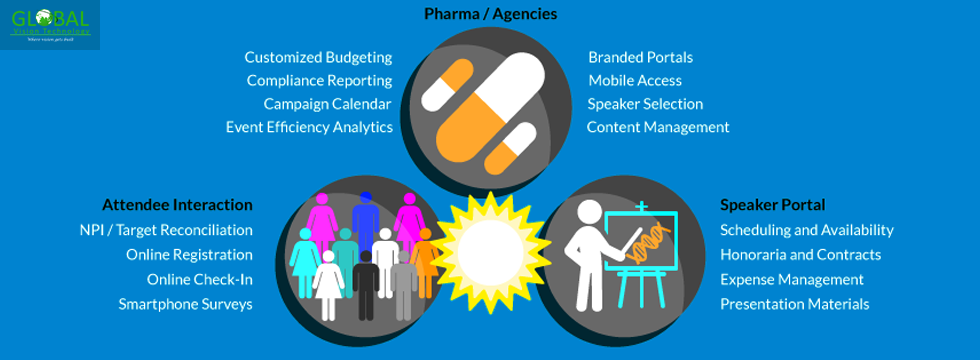
CRM Pharma
Customer relationship management (CRM) Service is important to every business in every industry, but it often seems that Big Pharma has a bigger stake in the outcome of customer interactions. It is incredibly expensive to develop new medicines, even with the advances that have been made in molecular modeling and understanding the human genome. A new drug might take a decade or more to develop from initial concept to final FDA approval, at a cost of tens or hundreds of millions of dollars. Once it makes it to market, the creator has to squeeze as much profit out of the drug as fast as possible—drug patents only last two years, after which generic versions become available, driving profits down to the basement. To accomplish this, makers pursue a two-pronged strategy of generating public interest while convincing doctors their product is the best one to prescribe for a given ailment.
Sign up to get FREE CRM Trial
The consumer side of the customer equation is mostly about awareness (generating a groundswell of interest that filters up to physicians) and post-prescription service (answering questions about the medication, providing discounts, and similar activities). Anything beyond that—especially if it involves collecting patient-identifiable data—risks violating various federal and state laws. There are ongoing legal battles in Maine, New Hampshire, and Vermont regarding prescription confidentiality. For the most part, the only other piece of marketing that patients see is the informational pamphlet in the doctor’s waiting room.
It gets tricky on the doctor side of the equation as well. It’s long been considered too resource-intensive to actively market new drugs to the entire medical community, so CRM Pharma have to focus on what are known as key opinion leaders, or KOLs. The typical KOL is a respected clinical researcher, practice leader, or prolific medical writer—somebody whose work affects other doctors and organizations. By cultivating a relationship with the right KOLs, pharmaceutical companies can very efficiently reach their audience.
Of course, there’s a catch. There are strict legal and ethical requirements regarding how close drug companies can get with a KOL before it starts looking like they have a financial relationship, whether in terms of spokesmanship or outright bribery. Supporting or sponsoring research is one thing; gifts and trips to junkets in exotic locales is another. Anything that could be construed as an attempt at influencing a KOL in ways that don’t directly concern the effectiveness of the new medicine is a serious no-no.
CRM Pharma, then, is all about making sure each KOL gets just the right amount of attention; not so little that they cool toward your products, but not so much that it taints the relationship. Traditional CRM software isn’t particularly well suited to this part of the pharmaceutical business, so specialists have turned up to take that role. The most commonly mentioned ones include Cegedim, MedThinkConnect, OpenQ, and Heartbeat Software. Most major software vendors with vertical integrations for life sciences give a nod to KOL management, and are developing or acquiring better and better capabilities in this area. Still, it’s definitely worth it to consider the dedicated providers mentioned above.
Sales enablement is also an important factor. Salespeople still have to visit doctors and make pitches—whenever you see a well dressed person with a briefcase and a new iPad going into or coming out of a doctor’s office, it’s probably a representative of a pharmaceutical vendor. Making sure the sales force has complete and up-to-date information on the doctor’s practice, patients, and history, and the latest information on the medications, is crucial to success even after the KOL campaigns have accomplished their goals
To find out more about CRM Pharma, click here
to conduct a free call.




